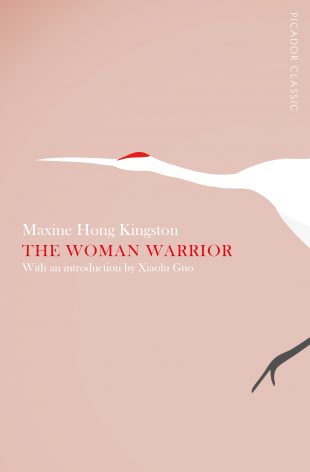[Book review] The Woman Warrior: Memoirs of a Girlhood Among Ghosts

Dragons, ghosts, and cooked racoons—they were the backbone of her existence, and the only attachment she had to the culture of her first-generation Chinese immigrant parents. By calling forth memories of her childhood growing up a small Asian girl in California, Maxine Hong Kingston opens her family’s box of secrets to the world.
But The Woman Warrior is hardly a memoir. Along parents’—mainly Mother’s—stories of Western ghosts and supernatural experiences—Kingston’s pages see-saw between fantasy and biography, telling the real in unreal ways.
For dinner, if they were lucky, they’d have snake or garden-snail. On a shelf there was a jar of decades-old alcohol; a bear claw fermenting inside. Ever so often, the alcohol was rubbed as ointment on the children’s wounds.
Mother was always the submissive wife. Her life revolved around her 8 children, 2 dead; children all the same. Of course, her sons were her source of delight, and it was her determined husband whom she would devote her life to. She had daughters, but everyone knows that “when you raise girls, you’re raising children for strangers”. They would not be hers for long. She did not need them.
Still, at bedtime, Mother would begin her “talk-story” to her daughters, whispering that she had trained as a young girl to be strong. She had taken her father and brothers’ places in battle, fighting their wars, enduring the pain. Kingston recalls, “she said I would grow up a wife and a slave, but she taught me the song of the warrior woman, Fa Mu Lan. I would have to grow up a warrior woman”.
Maybe Mother was never a female warrior, and maybe half of her stories were dreams, but in Kingston’s imaginative world, the dragons and the scars made perfect sense. The words strengthened an undying “Chinese-ness” to the most Americanized parts of the family’s Chinatown house.
Critics of Kingston’s writing have said that The Woman Warrior reinforces Asian stereotypes in Kingston’s hyperrealistic portrayal of patriarchal and shamanistic China. Some accuse Kingston of being anti-feminist.
And though it is true that the author writes of women having their feet bound, though she does not speak directly against the sexism she was exposed to, the good and the bad are what she believes make her completely and utterly Chinese.
The bruised and disfigured feet of the Chinese women made them wobbly and unbalanced, but they were all at once lovely because “perhaps women were once so dangerous that they had to have their feet bound.”
 Dragons, ghosts, and cooked racoons—they were the backbone of her existence, and the only attachment she had to the culture of her first-generation Chinese immigrant parents. By calling forth memories of her childhood growing up a small Asian girl in California, Maxine Hong Kingston opens her family’s box of secrets to the world.
Dragons, ghosts, and cooked racoons—they were the backbone of her existence, and the only attachment she had to the culture of her first-generation Chinese immigrant parents. By calling forth memories of her childhood growing up a small Asian girl in California, Maxine Hong Kingston opens her family’s box of secrets to the world.




















































